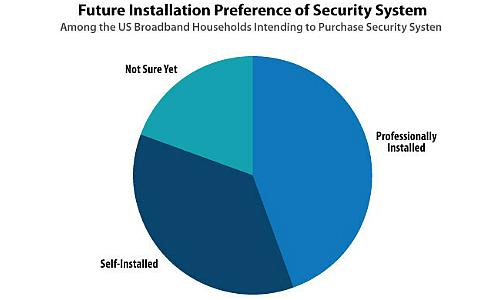
12.26.19 – SSI
Parks Associates finds preference for self-installed systems is growing among broadband households that are planning to buy a security system
DALLAS — Preference for DIY systems is growing among U.S. broadband households that are planning to buy a security system, rising from 18% in 2007 to 29% in 2012 to 36% in 2019, according to Parks Associates.
The percentage is even higher among people who actually follow through on their intentions: 51% of security system owners who acquired their security system in the past 12 months self-installed their system, according to Parks Associates’ report, DIY Disruption: Smart Products and Home Security.
Though these figures point to a rising trend in DIY preferences, intentions do not translate to sales as intentions may not be fulfilled for a plethora of reasons, according to the research firm, based here.
The report explores the home security market, including current state of adoption and preference for self-installable solutions, consumer interest in smart home products that address security needs, and the impact of these solutions on the traditional security industry.
“As people move from intenders to owners of security systems, they find the cost savings of DIY systems highly attractive — 48% of those who self-installed their system did so to save money,” says Dina Abdelrazik, senior analyst, Parks Associates. “Among earlier DIY systems, the challenges in installation and setup counterbalanced the cost savings, but current self-install security solutions are designed from the ground up to be installed by the consumer, removing that inhibitor.”
“DIY security systems are fulfilling on the appeal that these systems are easy to install,” Abdelrazik says. “From the security system industry perspective, smart products and DIY systems are woefully inadequate substitutes for a traditional full-blown security system, but for consumers, smart products and DIY systems can make them feel safe and provide similar peace-of-mind value propositions while delivering cost savings.”
